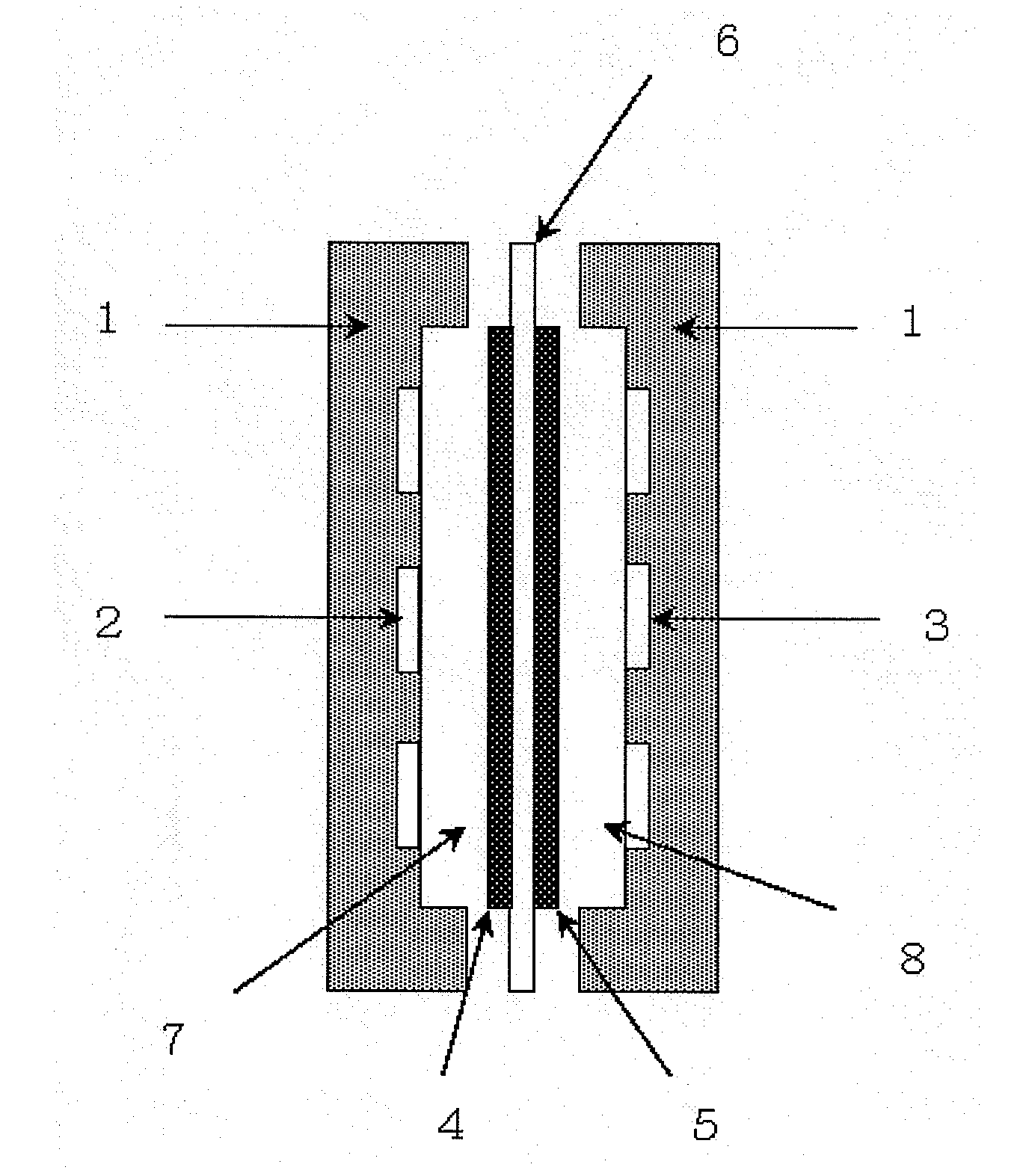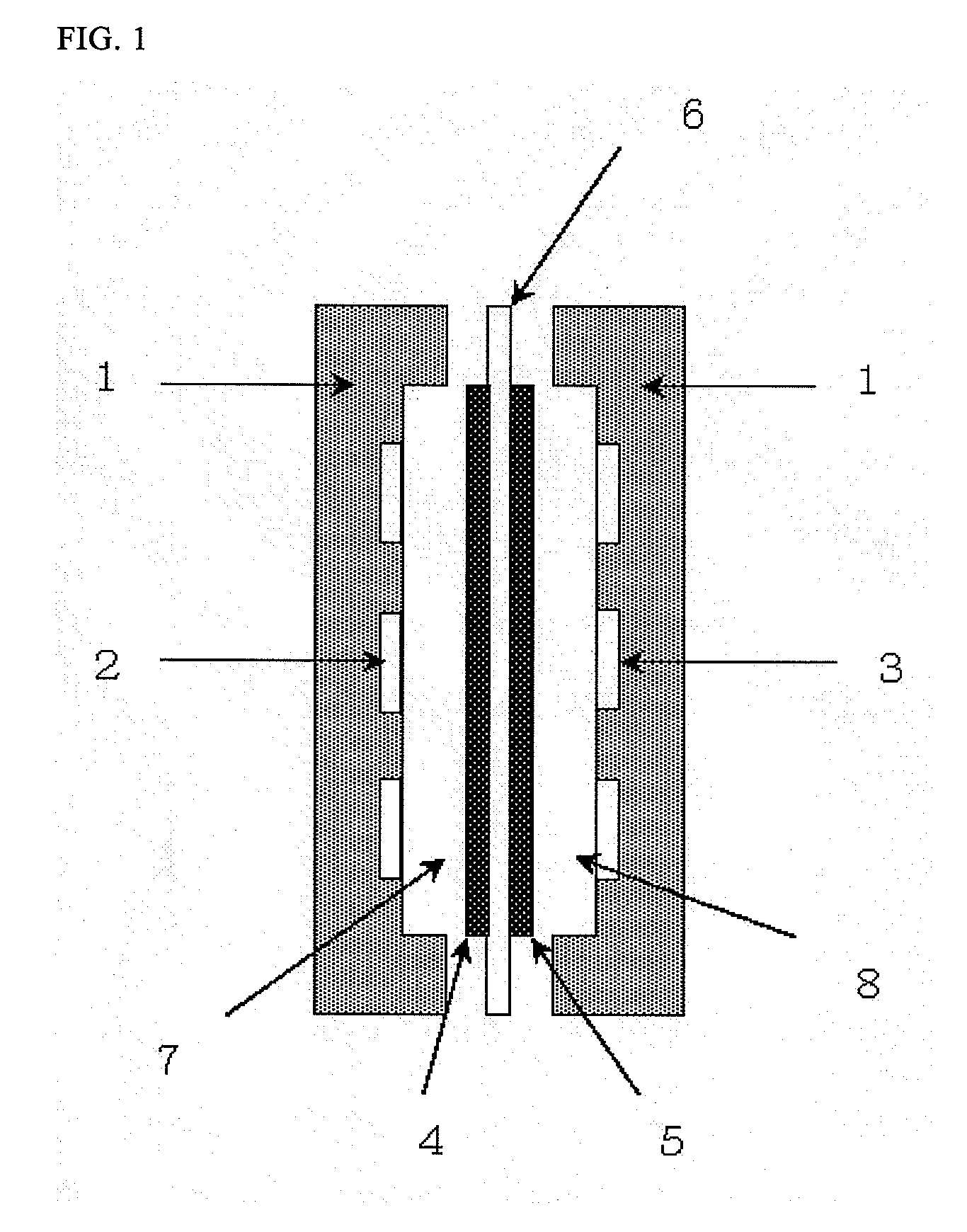Operating Method of Anion-Exchange Membrane-Type Fuel Cell
a membrane-type fuel cell and anion exchange technology, which is applied in the direction of fuel cells, fuel cell details, solid electrolyte fuel cells, etc., can solve the problems of expensive noble metal catalysts being usable as catalysts, achieve high fuel cell output, improve the output of anion-exchange membrane-type fuel cells, and reduce carbon dioxide concentration
- Summary
- Abstract
- Description
- Claims
- Application Information
AI Technical Summary
Benefits of technology
Problems solved by technology
Method used
Image
Examples
example 1
[0080]The air having carbon dioxide concentration of 250 ppm was supplied to the cathode chamber to conduct output test. The results are shown in Table 1. Also, the fuel cell after output evaluation was disassembled, and the removed anion-exchange membrane-catalyst electrode assembly was immediately moved into a nitrogen-substituted glove box to measure the rate of counterion species of the anion exchange group in the anion-exchange membrane-catalyst electrode assembly. The results are also shown in Table 1. Note that the rate of counterion species at the start of the output test means the rate of counterion species of the anion exchange group in the anion-exchange membrane-catalyst electrode assembly before it is installed into the cell.
examples 2 and 3
[0081]Changing the carbon dioxide concentration of the air supplied to the cathode chamber to the values shown in Table 1, the output test was conducted and the rate of counterion species was measured as with Example 1. The results are shown in Table 1. Note that for Example 3, the output was also evaluated after generating electricity at cell voltage of 0.2V for 10 hours.
example 4
[0082]300 ml of 0.5 mol / L-aqueous sodium hydroxide solution was put in a gas washing glass bottle, and this was connected in series to the cathode chamber side supply line of the fuel cell shown in FIG. 1 as a low carbon dioxide air supply system. Except for supplying the air in which carbon dioxide concentration was not adjusted directly to the system, output test was conducted as with Example 1. The results of the output test and measurements of the rate of counterion species are shown in Table 1.
PUM
| Property | Measurement | Unit |
|---|---|---|
| RH | aaaaa | aaaaa |
| RH | aaaaa | aaaaa |
| RH | aaaaa | aaaaa |
Abstract
Description
Claims
Application Information
 Login to View More
Login to View More - R&D
- Intellectual Property
- Life Sciences
- Materials
- Tech Scout
- Unparalleled Data Quality
- Higher Quality Content
- 60% Fewer Hallucinations
Browse by: Latest US Patents, China's latest patents, Technical Efficacy Thesaurus, Application Domain, Technology Topic, Popular Technical Reports.
© 2025 PatSnap. All rights reserved.Legal|Privacy policy|Modern Slavery Act Transparency Statement|Sitemap|About US| Contact US: help@patsnap.com


